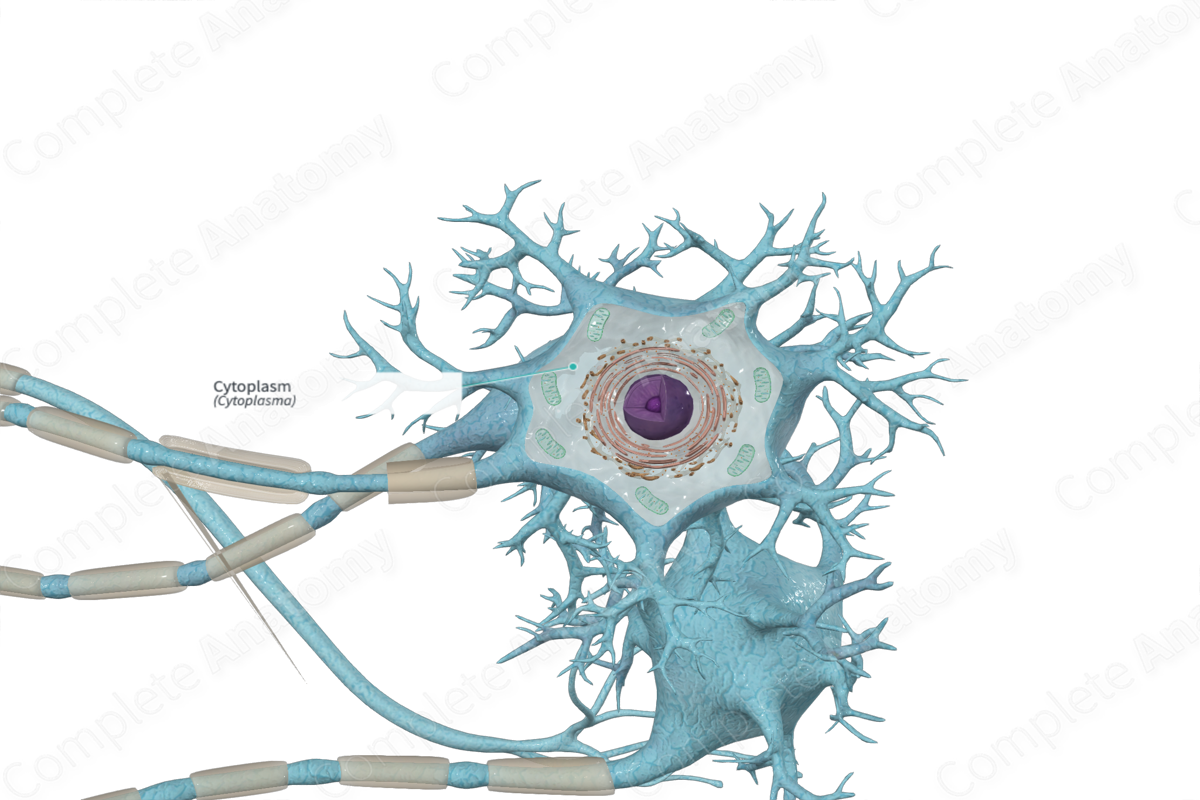
Quick Facts
The cytoplasm is the protoplasm of a cell exclusive of that of the nucleus; it consists of a continuous aqueous solution (cytosol) and the organelles and inclusions suspended in it and is the site of most of the chemical activities of the cell (Dorland, 2011).
Structure and/or Key Features
The cytoplasm of a cell includes an aqueous solution, the cytosol, and the organelles of the cell suspended in it. It is tightly enclosed by the plasma membrane.
In the cell body of a neuron, the cytoplasm contains highly developed rough (granular) endoplasmic reticulum and numerous polyribosomes, indicative of the high levels of protein syntheses occurring for both internal use and transport (Ross and Pawlina, 2006).
The region of the cytoplasm actively synthesizing proteins stains intensely with basic dyes due to the presence of RNA. Large clumps of rough endoplasmic reticulum in large motor neurons are referred to as Nissl bodies or Nissl substance.
The cytoplasm also contains a Golgi complex consisting of parallel arrays of smooth cisternae surrounding the nucleus. Mitochondria are also abundant in all parts of the cytoplasm, particularly in the axon hillock. Intermediate filaments and microtubules are abundant cytoskeletal elements in the cell body and, in some neurons, lipofuscin is a cytoplasmic inclusion (Mescher, 2013).
Function
The cytoplasm is the site where most chemical activities of the cell occur.
References
Dorland, W. (2011) Dorland's Illustrated Medical Dictionary. 32nd edn. Philadelphia, USA: Elsevier Saunders.
Mescher, A. (2013) Junqueira's Basic Histology: Text and Atlas. 13th edn.: McGraw-Hill Education.
Ross, M. H. and Pawlina, W. (2006) Histology: A text and atlas. Lippincott Williams & Wilkins.
